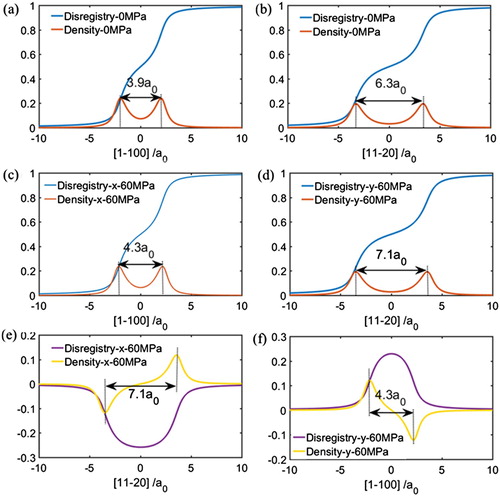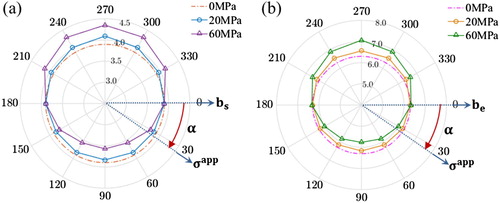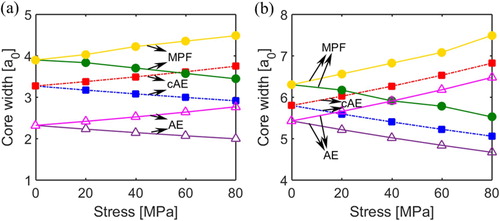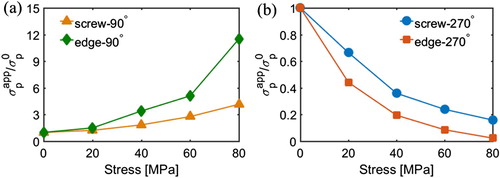Figures & data

Figure 1. Disregistry and density of Burgers vectors of screw and edge dislocations (a,b) in the principal direction (parallel to Burgers vector) without applied stress, (c,d) in the principal direction under 60 MPa shear stress with , (e,f) in the minor direction (perpendicular to Burgers vector) under 60 MPa shear stress with

Figure 2. Core widths (in the unit of ) of (a) screw dislocation and (b) edge dislocation under 20 and 60 MPa in a function of applied shear directions (
).



